#1910s extant garment
Text



Peach pink silk dress, 1910-1912, French.
Designed by Paul Poiret.
Palais Galliera.
#paul poiret#poiret#womenswear#extant garments#dress#silk#19th century#palais galliera#france#1910#1910s#1910s dress#1910s France#1910s extant garment
417 notes
·
View notes
Text
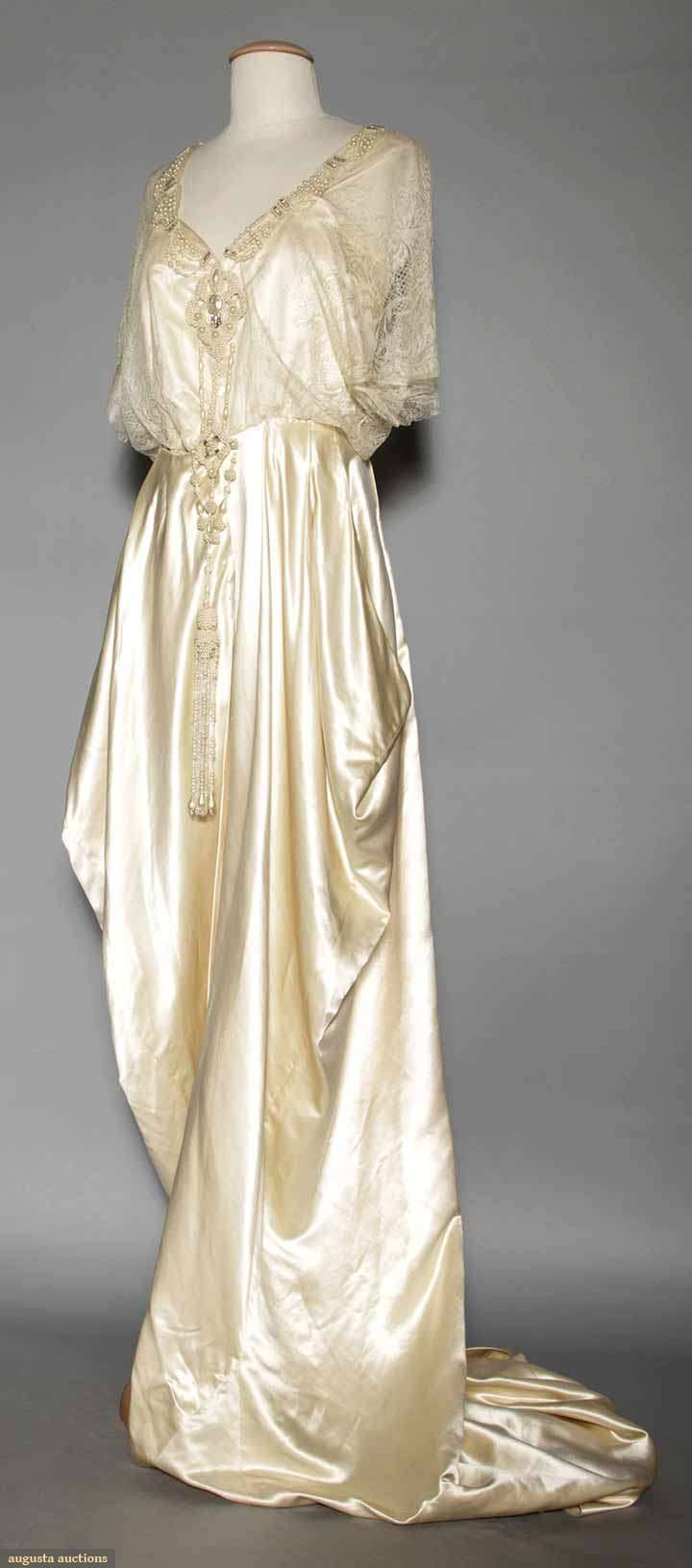

Wedding gown, 1912.
Silk charmeuse trained gown, lace bodice trimmed w/ crystal beads & pearls.
via augusta auctions
#THIS IS HEAVENLY#when i say my jaw dropped#fashion history#history of fashion#historical fashion#history of dress#wedding dress#wedding gown#edwardian era#edwardiana#edwardian fashion#titanic era fashion#titanic era#20th century fashion#extant garment#1910s#1912#1910s fashion#e
351 notes
·
View notes
Photo
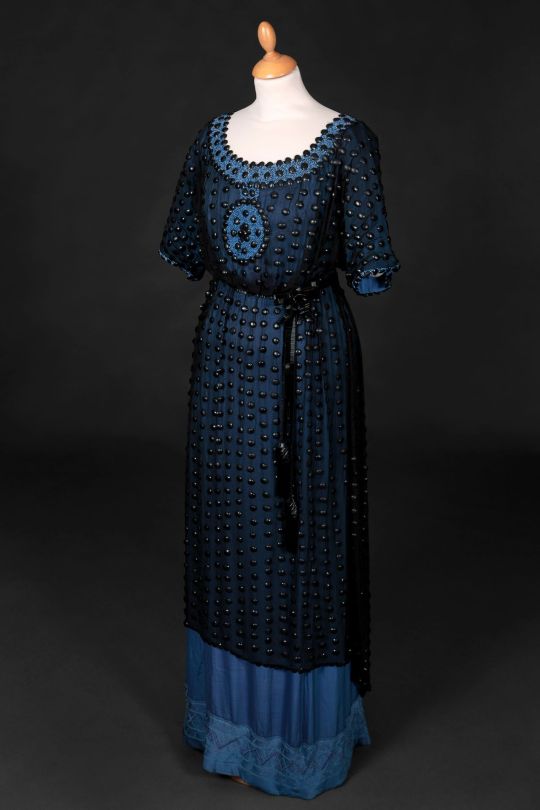
Afternoon dress by Lanvin, winter 1910
From Tessier-Sarou
1K notes
·
View notes
Text



I realised I should start posting things from my personal collection more. This is a silk 1910s bodice. It has pink crystal buttons with green triforces on them. It’s also a larger compared to other extant garments. The silk is damaged in a few places.



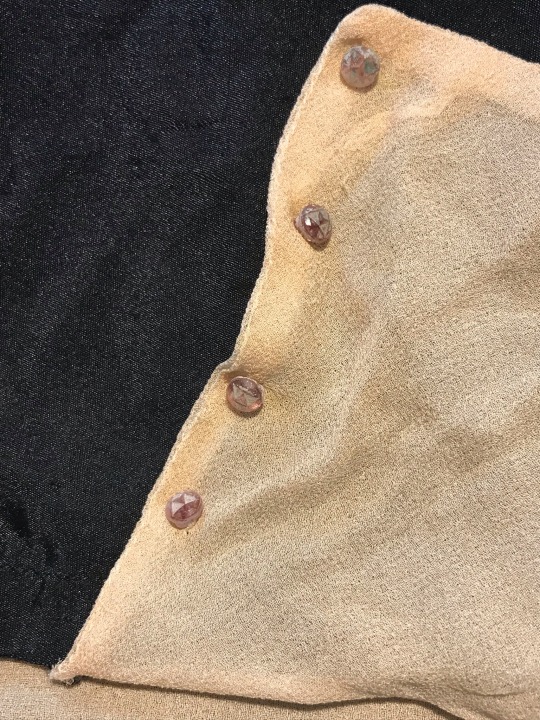

69 notes
·
View notes
Text
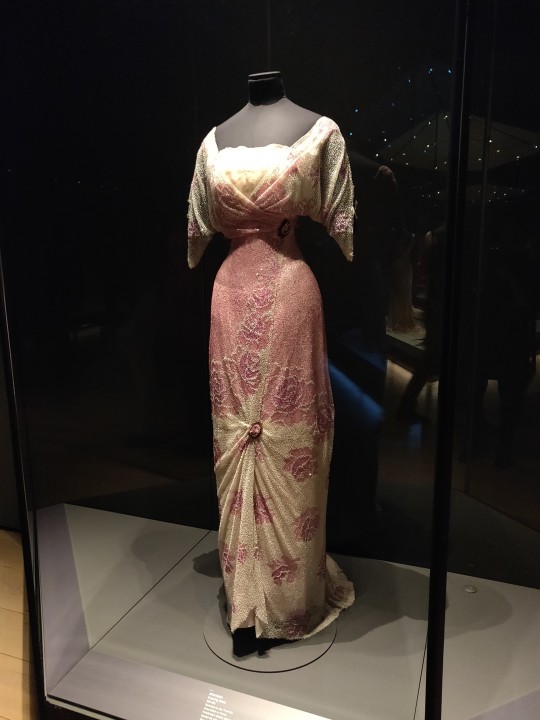

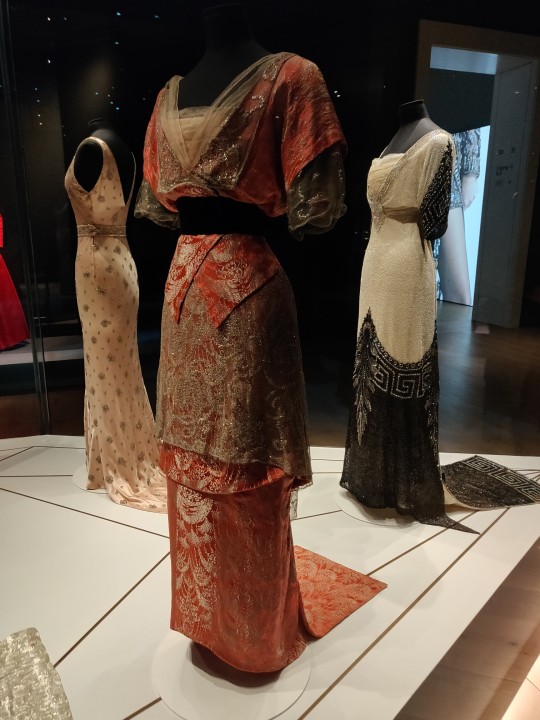

Some wonderful extant 1910s garments from the national museum in Olso, Norway
#edwardian#1910s#1910s fashion#historical fashion#early 20th century#1900s#edwardian fashion#edwardian aesthetic#edwardian era#mine
143 notes
·
View notes
Note
Based on your knowledge of fashion history and dress construction, to what extent would it be possible to rework dresses from one silhouette to another? I know even poorer people in the Victorian/Edwardian era were expected to be wearing reasonably up-to-date silhouettes as part of appearing respectable, and that people would mend and reuse garments as much as possible. From your knowledge of how silhouettes were created with dress construction and with underlayers, would it be possible to turn, say, an early bustle era dress into a natural form dress without having to just use it as essentially raw fabric? And are there any extant garments with evidence of that sort of transformation occurring? (I assume the feasibility would vary depending on what the changes in style were, as it's more possible to take fabric away than add it, of course)
You're right on with your assumption. It's all down to how much fabric is present, and how dramatically styles changed- for skirts, First Bustle to Natural Form might be easy enough with simple gathering and reshaping, but Natural Form to Second Bustle might be harder. Of course, ruching and gathering and smocking and pleats and darts can hide a surprising amount of excess fabric. And as historical costumers frequently remind ourselves, Piecing Is Period!
Also, you might not be working with a garment from the immediate previous fashion era. I once saw a 1910s dress that appeared to be, based on some very unusual bodice seams in a different color thread + anachronistic armsceye piping, made from an 1860s bodice and skirt refashioned and stitched together. Given the vast difference in fabric yardage, that seems to me like a pretty easy conversion. But they hadn't simply used the bodice for raw fabric, as you mentioned; the front darts had been removed and restitched for a different silhouette, and the very distinctive '60s back seams left untouched.
54 notes
·
View notes
Photo










evening dresses belonging to V. V. Karakhan (Vera Viktorovna Karakhan)
click to enlarge + details
#fashion history#historical fashion#1910s fashion#russian#french#callot soeurs#paul poiret#jeanne paquin#jacques doucet#georges doeuillet#V. V. Karakhan#Vera Karakhan#hermitage museum#extant garment#20th century#pink#yellow#white#green#ish#ballgown#evening gown#sortie de bal#cape#im not posting extant garments im just obsessed with her wardrobe#theres this green dress i adore but the only pic of its front i have is the one i took and thats not very good lol
197 notes
·
View notes
Photo
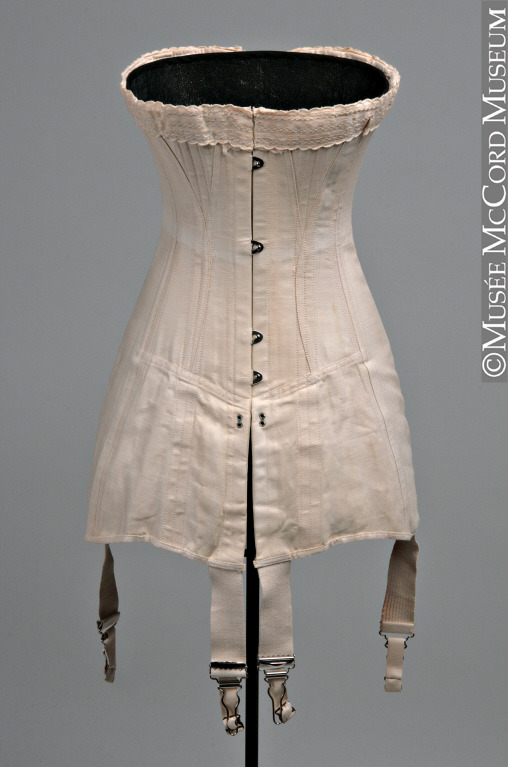
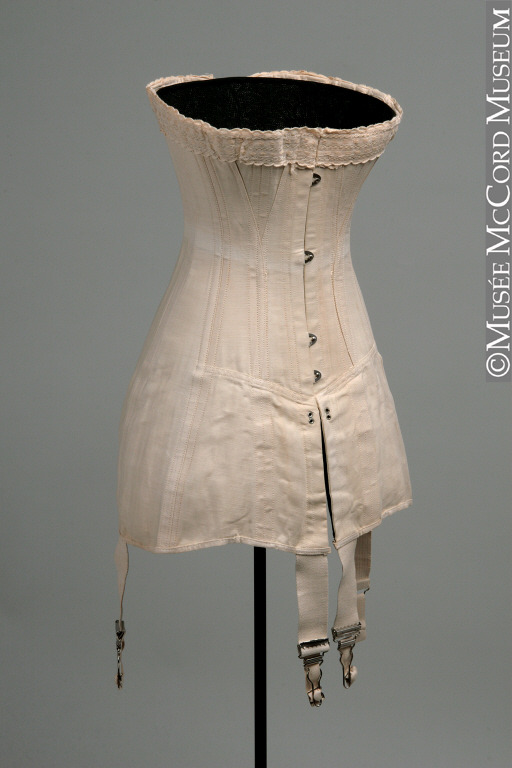
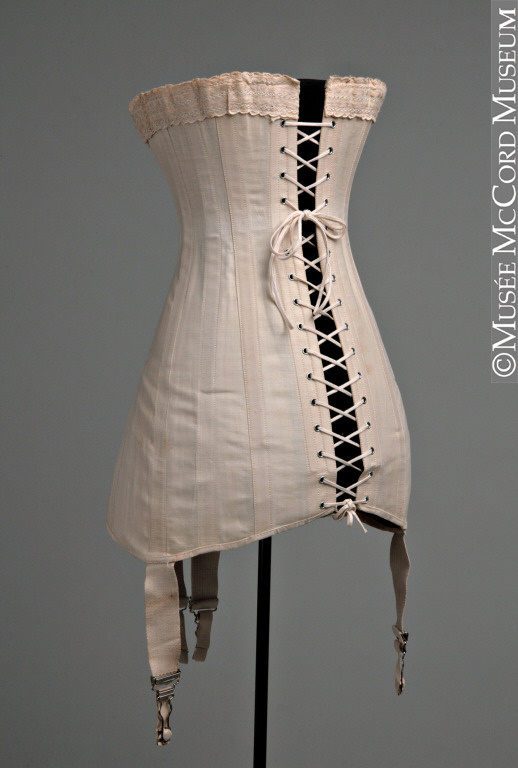
Corset
Dominion Corset Co.
About 1910-1920, 20th century
Cotton coutil
M2009.41.12.1-2
© McCord Museum
#1910s#1910s corset#20th century#20th century corset#edwardian#edwardian corset#historical underwear#historical corset#historical corsets#history#edwardian fashion#extant#extant garments#Extant corsets
105 notes
·
View notes
Text

A young Midshipman, c. 1790, British, cicrle of Louis Vaslet. Sold via Roy Precious Antiques and Fine Art.
Mon. 3rd—Rough.
Tues. 4th—I got the better of my sickness yesterday, but there blew so strong a gale of wind that I was obliged to remain in my cot or in a corner behind the stove in the great cabin, to secure myself from falling. It was by persevering to go on deck and by eating salt beef, covered with mustard, that I soon became well. As my health amends my spirits rise, and I am rather diverted at the difficulties we meet with at dinner, when, in spite of all care, the dishes are often tossed to every corner of the room. The ship not having sufficient ballast makes her roll so unreasonably. I think I have great merit in beginning to write to you this early, in spite of rough weather. The children (Francis and Sophia) are well, but never appear to be safe except when in their cots, for the nurses are much indisposed and have very indifferent sea legs. I am learning to walk on deck, but cannot yet do it without leaning on the arm of a gentleman. Capt. Murray, who has been in France, plays at reverse, the French card game, with us.
Sophia's amusement is seeing the poultry on deck, where a little midshipman carries her every day. The wind has for several days driven us to the southward of our course. It begins to blow hard again, so I must retire to my cot.
Taken from Elizabeth Simcoe's Diary only a few days into her journey to Canada aboard HMS Triton in October 1791.
I am quite excited that we have her diary as a source on life aboard a Royal Navy ship viewed from a woman's perspective alongside these fascinating (and funny) anecdotes she relates.
Given that Elizabeth Simcoe was herself remarkably not-really-tall (by estimations taken from having measured a then-extant garment owned and worn by Simcoe in the 1910s, she was just about 5'00"), which on occasion was even commented on or Simcoe guesstimated to be younger than she was by third parties, I don't think by calling the midshipman "little" she intends to comment on his height, and rather refers to his age.
It also speaks of some measure of trust on the part of the parents to let a near-stranger take their child on deck to play. One wonders if this young man, maybe a child as young as twelve even, had younger siblings at home and was experienced in handling toddlers.
Perhaps the midshipman missed his own siblings and was happy to take on the additional duty and sacrificing what was likely time off for him to spend it with a by all acounts particularly difficult, stroppy two-year-old?
Sadly, since Simcoe does not give a name and I have not found the crew lists for HMS Triton online, we may only guess at his identity; but regardless of that, this charming annecdote may serve as a reminder that contrary to the flippant stereotype of the sailor with 'a wife in every port', many men and boys, particularly during the long campaings of the late 18th and early 19th centuries when Britain was at war with France, felt the emotional strain of being unable to see their loved ones, and sometimes not even receive news from them for many weeks.
Although I cannot verify my hypothesis regarding this particular young man, one would hope that perhaps his time playing with little Sophia Simcoe brought him some measure of joy among the otherwise rather strict and somewhat rough life on board.
#midshipman monday#midshipmen monday#british history#history#naval history#elizabeth posthuma simcoe#elizabeth simcoe's diary#18th century
61 notes
·
View notes
Text
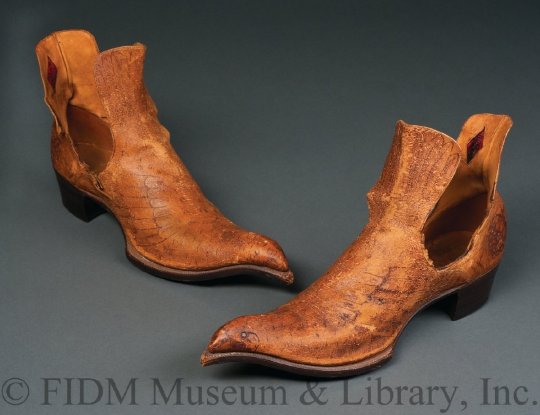

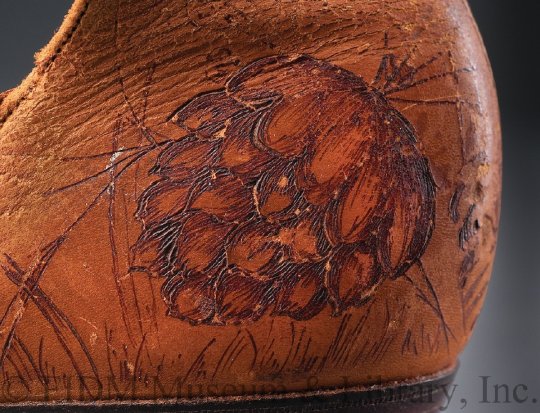
Boots
The Stetson Shoe Co., 1910-1920
The FIDM Museum
For as important and iconic as Wild West "Cowboy" wear is, extant garments from the era are incredibly fucking rare, because they were practical garments meant to be worn & used.
221 notes
·
View notes
Text

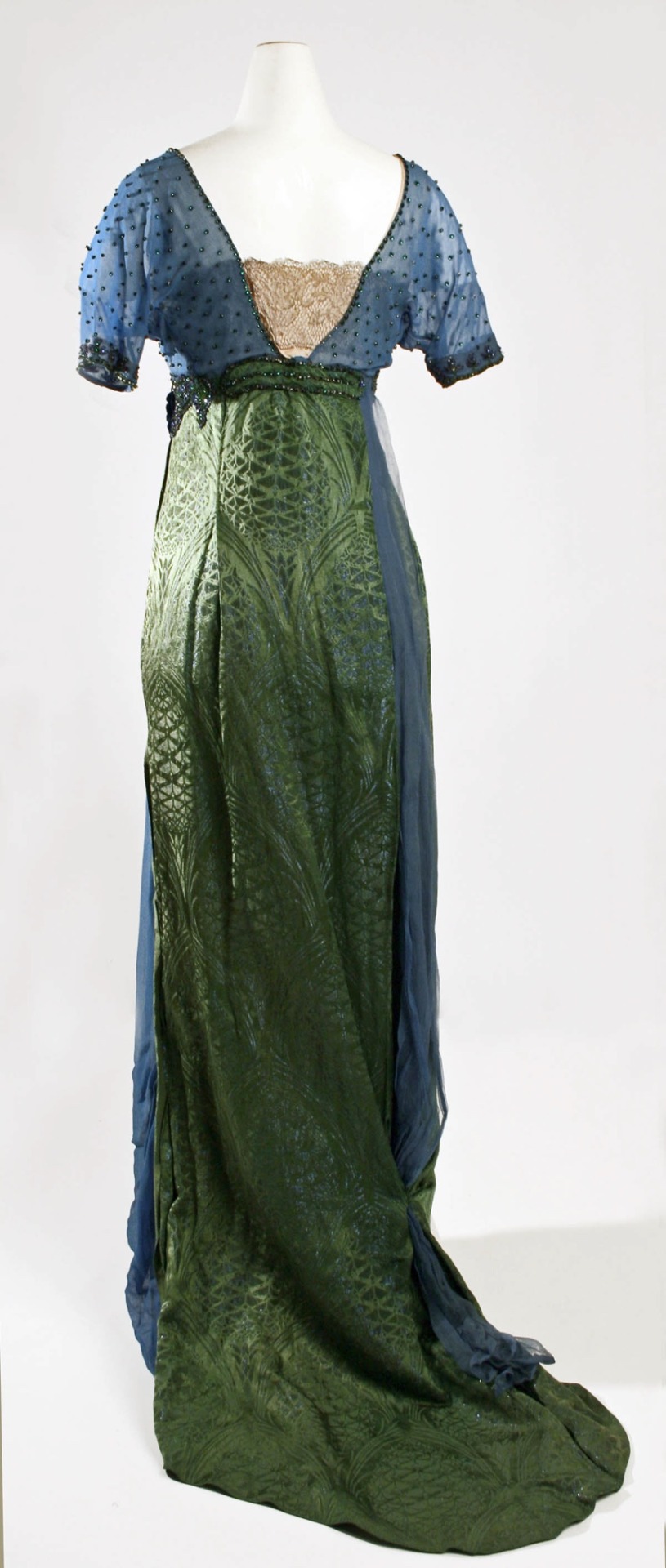
Blue and Green Silk Evening Dress, 1913-1914, French.
Designed by Jeanne Hallée.
Met Museum.
#Jeanne Hallée#womenswear#extant garments#dress#silk#french#1910s#1913#1910s dress#1910s France#1910s extant garment#1910s evening#evening dress
460 notes
·
View notes
Text


Trained Silk Ballgown, c.1912
Silk charmeuse, empire waist, short sleeves, bodice trimmed with cream lace & gold beading, silk illusion draped over-skirt.
first photo via nivifer on pinterest, who I think has lightened it from the original posting.
second photo directly from augusta auctions
#fashion history#historical fashion#history of fashion#edwardiana#edwardian dress#edwardian era#edwardian fashion#titanic era#early 20th century#20th century fashion#extant garment#1910s#1912#1910s fashion#e
185 notes
·
View notes
Photo

Day dress by Poiret ca. 1910
From Tessier-Sarou
971 notes
·
View notes
Text






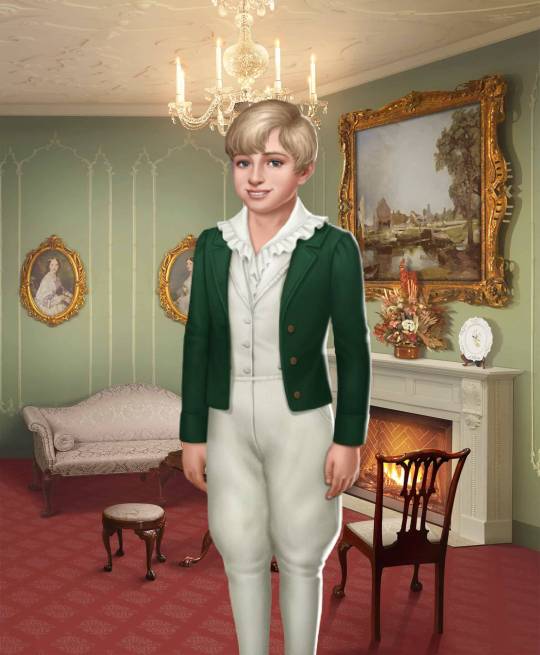
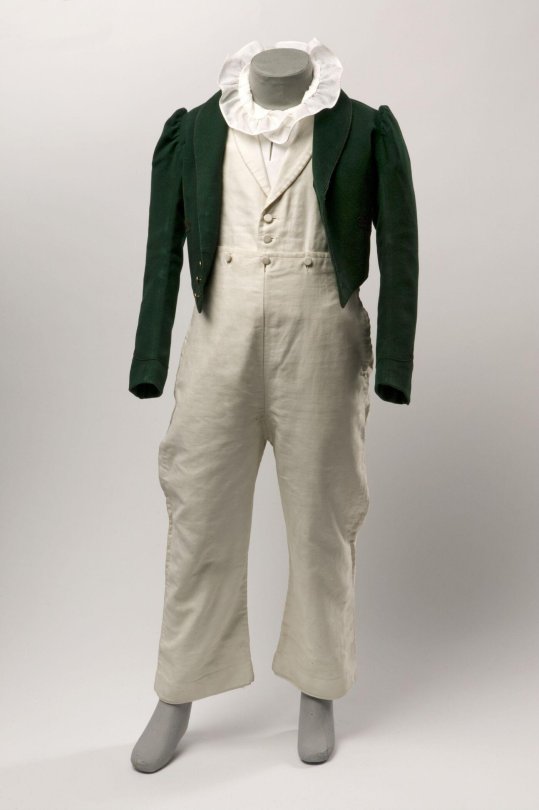


Desire & Decorum + extant garments, part 3
click below for details :-)
Miss Parsons's red ball gown: Regency-style fancy dress, 1912 (Antique Dress)
Miss Parsons's green evening gown: Muslin dress, c. 1800-1805 (Cora Ginsburg LLC)
Miss Holloway's purple evening dress: Silk chiffon dress, c. 1910 (Fashion Museum, Bath)
Percival Richards's suit: Boy's suit, c. 1825-1830 (Victoria & Albert Museum)
Countess Henrietta's magenta evening dress: Embroidered dress, c. 1810 (Châteaux de Malmaison et Bois-Préau)
#playchoices#desire & decorum#desire and decorum#choices desire and decorum#choices d&d#annabelle parsons
71 notes
·
View notes
Text
I have fallen down a rabbit hole of fashion plates. Let's just - let's just have my Top Five fashion periods, yes?
#5. the 1850s
The era in which full skirts became a Thing and then crinolines were invented. A+++ social distancing. Also crazy curls and BONNETS? A++ would reccomend.
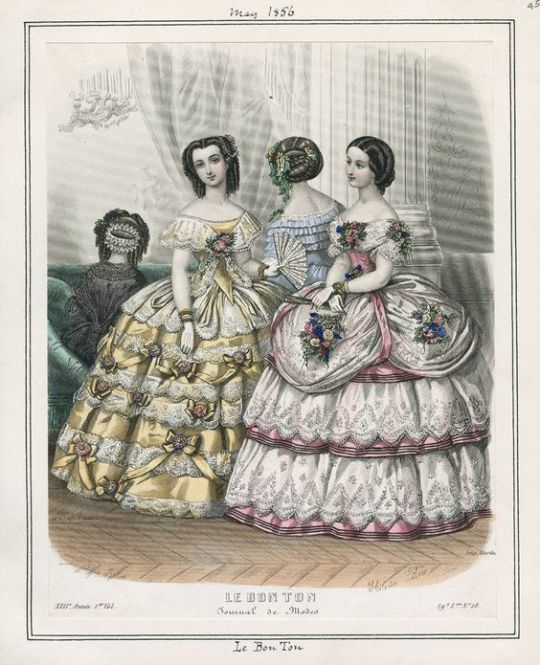
Fashion plate from Le Bon Ton: Journal de Modes, 1856.
#4. the 1900-1910s lingerie dress/gowns
People got a little extra with the lace in this period not gonna lie. It's glorious. These dresses were usually made of cotton batiste or cotton lawn, or other lightweight, sheer, and breathable fabric. Oh and don't forget obscene amounts of lace. Like. I could never afford that much lace on one single dress ohmygod.

Cotton batiste lingerie gown, 1900-1910, via Augusta Auctions.

Photo of a girl in a lingerie dress, 1900-1910, probably Russian.
#3. the 1870s aka the First Bustle Era
No need to ask your mother if your bum looks big in this. She'll probably say that it's not big enough anyway. The amount of Extra™ is really Just Right. Just - look at them.

Fashion plate from Le Moniteur de la Mode, 1872.

Fashion plate from Revue de la Mode, 1873.
#2. the 1820s
I'm pretty sure I've established that I am Extra™. Usually people just lump this decade into the Regency but no??? George was already king and the silhouettes aren't even that similar. The waistline in the 20s were gradually shifting downwards, in contrast to the extremely Extra™ (but not to my taste) shelf bust of the height of the Regency. People got a little crazy with the trim because the Napoleonic Wars were over and people had more spare money to spend on Extra™ things. Do not get me started on the Rouleaux trims.

Ball dress by John Bell, 1821, via Los Angeles County Museum of Art.

Fashion plate from La Belle Assemblée 1842, by John Bell.
#1. the 1830s aka the Romantic Era
Surprise surprise. If you thought that the 20s were Extra™ please consider this:

Fashion plate from Ladies' Pocket Magazine, 1832, via Los Angeles County Museum of Art.
The hair was Extra™, the bonnets were Extra™, the silhouettes were Extra™, the trimming was Extra. This is one of those fashion plates where I see it and go "That looks so crazy I must make one". And they're not hard to make. Giant rectangles for the skirt, half-circles for the sleeves and the most complicated part is the relatively simple bodice. And I get to jazz it up with lace and sparkly things. It's all the best parts of historical dressmaking in one.
Here, have another:
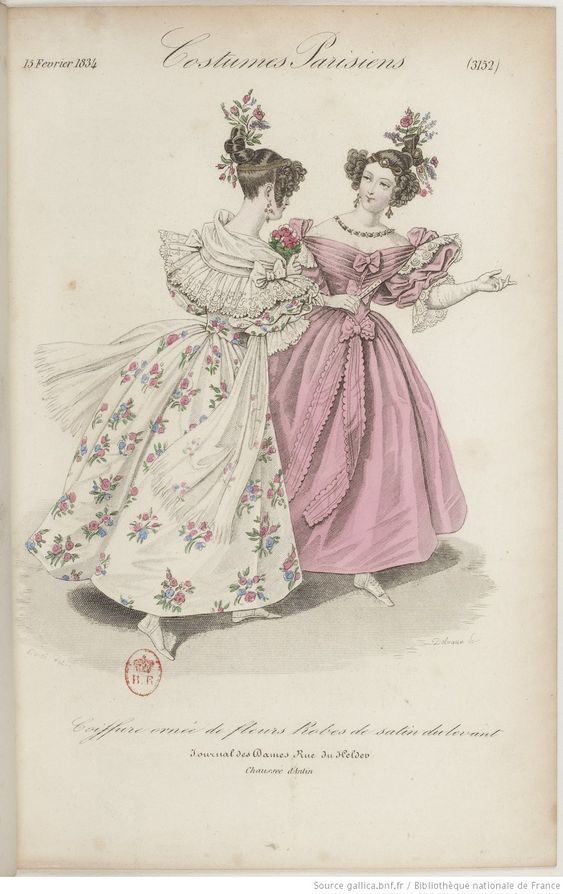
Fashion plate from Costumes Parisiens: Journal des Dames et des Modes, 1834.
And as a bonus for bearing with me until now, have a Cancelled™:
Regency court dresses.

And this is one of the relatively okay ones.
Yes, the court dresses in Bridgerton were very pretty, and yes, they were probably the most historically accurate out of their many, many costumes, but they were, unfortunately, French. The British ones looked like that. And this. And this. And all this. The literal lovechild of a Regency empire waist dress and a panier because the queen thought that the fashionable silhouette was too informal for court. Let's just say Queen Charlotte had approximately zero (0) taste.
Find more 1820s fashion plates and extant garments here, and Victorian ones here. Lady Rebecca Fashions on YouTube has a wonderful video on Regency court dresses here, and Pinsent Tailoring has a little bit of a meltdown over the men's costumes and talks about those godawful court dresses in this video.
#dress history#fashion history#daisy talks history#history#historical fashion#1850s fashion#1900s fashion#1870s fashion#1820s fashion#1830s fashion#regency court dresses#victorian fashion#regency fashion#bridgerton#long post
9 notes
·
View notes
Note
Hello Vince! I've been researching these questions for a while to no avail and was wondering if you had advice, as a fellow trans person into historical fashion. The first, is that as a nonbinary person I'd like to make clothes with an androgynous/genderfuck silhouette but am not sure how to achieve that, if you have any tips.(1/2)
The second, larger problem, is that as a nonbinary person, I have a “nonstandard” body. I’m dfab and have had top surgery but am not on T. I am quite short (5'2") with wide hips. My attempts at drafting patterns and making mockups from men’s patterns have gone atrociously (I was attempting some 1908 breeches.) How have you found success in making/drafting historical clothing with a trans body™? (2/2)
Hello! Ok. First thing you need to know is that there’s no such thing as a “standard body”. It’s not a thing, and it never has been.
Clothing companies may try to pretend it is, but all they’re doing is making stuff that kind-of-sort-of fits a lot of people, but hardly fits well on anybody at all. (The same is true of commercial sewing patterns, although there is much more potential to change stuff with those.) Look around and you’ll see that people come in an infinite variety of shapes and sizes. Different heights, different weights, different proportions, and varying degrees of asymmetry.
Mass produced garments are going by statistical averages, and people just come in too many shapes to make that work. It’s why I have a job doing alterations for a suit store. It’s probably why unstructured, loosely fitted, and/or stretch knit garments are so common nowadays. (That, and it’s easier to wash them. And easier to make them cheaply in sweatshops. I want to punch the fast fashion industry in the face, but I digress.)
People have always come in a huge variety of shapes, all throughout history, but up until whenever mass production became the norm (late 19th and early 20th century I think? It happened gradually.) they had the advantage of having their clothes made specifically to fit them. Unless they could only afford secondhand clothes, but even then they’d probably alter them to fit.
And trans people existed back then too, and people cross dressed for various reasons. “Breeches roles” for actresses were hugely common in theatre, so I think it’s safe to say that breeches can be made to go over wide hips just fine.
I haven’t seen any of your pattern attempts and I don’t know how many you’ve done, but I can say with some degree of confidence that you’re having trouble because it’s your first attempt at a rather difficult thing that takes some time and practice to get good at. We all start out by sewing and drafting horrible stuff! Do not despair! Pattern drafting is a wonderful skill to have, and after enough bad patterns you will get to good ones! It’s a whole entire human you’re putting fabric around, and it takes some practice to develop an eye for what shapes work best on you, and how to correct various fit issues.
Here’s my pattern drafting method:
I usually use pattern diagrams from The Cut of Men’s Clothes, Costume Close Up, or the LACMA pattern project. All 3 of these sources have nice little scaled down diagrams of pieces traced from extant historical garments, and I start by tracing those onto a small sheet of printer paper. I get a reference picture or several of a similar garment. Preferably a portrait of someone wearing it, or the garment displayed well on a mannequin. I then stand in front of the biggest mirror in the house (wearing everything I’d be wearing under that garment) and imagine that garment on me, and where all the edges and seams are. I get my measuring tape and I measure various bits of the imaginary pattern pieces, and mark these measurements down on my little diagram. Here’s what the one for my yellow striped waistcoat looks like.
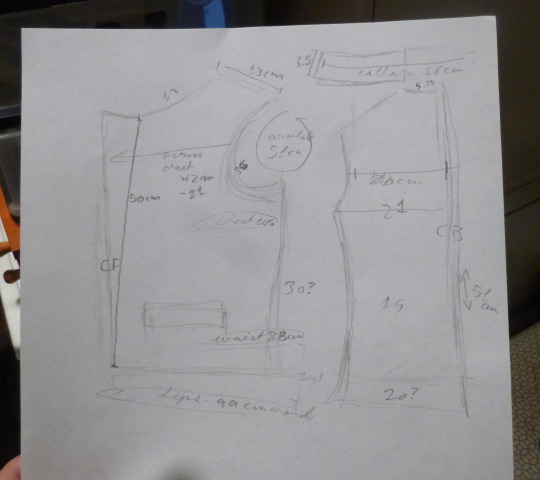
Once I’ve got a satisfactory amount of measurements marked down, I go to my big roll of stiff brown butcher paper and I draw out the pattern pieces full size according to these measurements. It’s ok if the measurements don’t all line up perfectly, because it’s awkward to measure yourself in front of a mirror, so they aren’t all exact.
The important thing is to get the lines nice and smooth, and approximately where they should be, and to get the overall shapes similar to the diagram pattern pieces in a way that fits your proportions. They won’t be exactly the same as the diagram in the book because nobody is shaped exactly the same as whoever wore the original garment. For the above waistcoat I had to flare the hips out waay more than on the inspiration pattern, but when it’s on me that’s not really noticeable because it fits. (Mostly. I still need to work on the shoulders..) I then mock it up in crappy thrift store fabric or old bedsheets, and the past few times I’ve done patterns this way I’ve found them to fit surprisingly well, needing only a few small alterations. I’m very visual, so this method works for me, but other people may prefer different methods.
In college we learned to draft modern patterns with math formulas, but I don’t like doing that, and the basic blocks we did then aren’t super helpful for historical cuts anyways. I know that for the 19th and 20th centuries there are lots and lots of tailoring books available that have drafting instructions, but as I have not yet dipped my toes into the 19th century I can’t really comment on them.
However you’re drafting, be sure to look at lots and lots and lots of reference pictures from the era so that you get a good picture in your head of what the fit and cut is supposed to be like. Things fit differently in different eras. For example, 18th century coat sleeves are cut much tighter than modern ones, and with a considerably smaller armhole. (Which actually gives you a far better range of motion.) They don’t have any shoulder padding either. And 18th century breeches have wrinkles at the crotch, it’s just part of how they fit.
Alright, I think that’s all I’ve got to say on patterning for now. And now to address the question of androgynous silhouettes! I really don’t want to fall into the trap of equating “androgynous” with “masculine”, but most of the things that immediately come to mind are historical menswear because they’ve got drastically different silhouettes that don’t read as very masculine to the average modern onlooker. One of the things that made me start on a 1730′s project was the early 18th century silhouette. (That, and the lure of Huge Coat Cuffs) Just look at those adorably poofy coat skirts!

Antoine Hérisset, 1729, Rijksmuseum.
The early-to-mid 19th century is another great period for men’s silhouettes. Tiny waists and softly rounded chests (you see padding in a lot of the waistcoats) were in, and the men in the fashion plates are drawn with doll faces, dainty little feet, and pretty substantial hips. Behold:

(1834) I’d like to do an 1830′s outfit someday, and to make a pair of mens stays for it.

Here’s another one so you can see The Hips. The darn source link isn’t working, but this is from Costume Parisien, 1823.
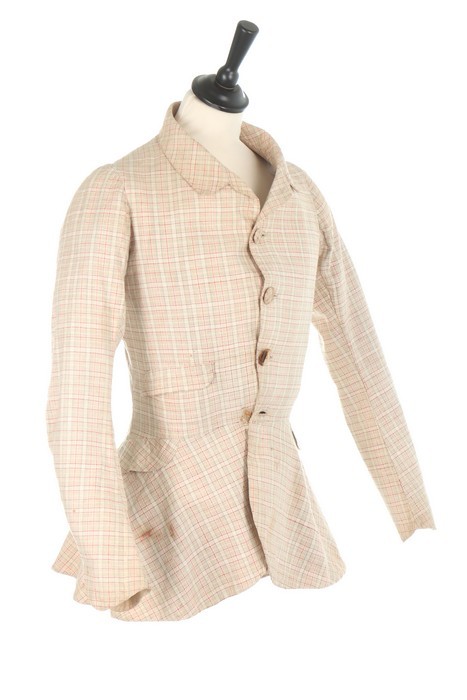
Young man’s cotton summer jacket, c. late 1840′s.
Depending on how concerned you are about foolish comments from random strangers, there’s also the second half of the 17th century to consider. What could be more androgynous than a vaguely human shaped wad of fabric and frills?
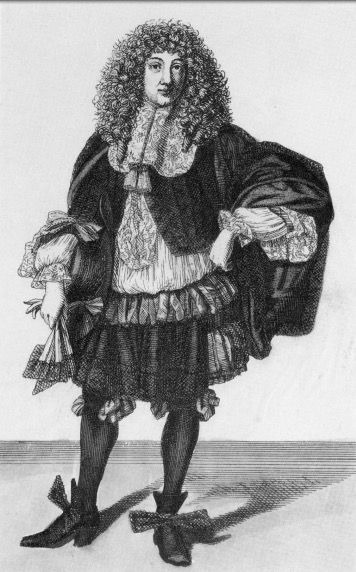
I Cannot find the source for this but it’s a French engraving c. 1660.
Now, I am less educated on historical women’s fashion, but I know that those shapeless little 1920′s dresses were going for a more androgynous look. Flat chests and short hair for girls was fashionable, and you can see the beginnings of that boxier silhouette in the 1910′s.
1910′s women’s suits are magnificent.
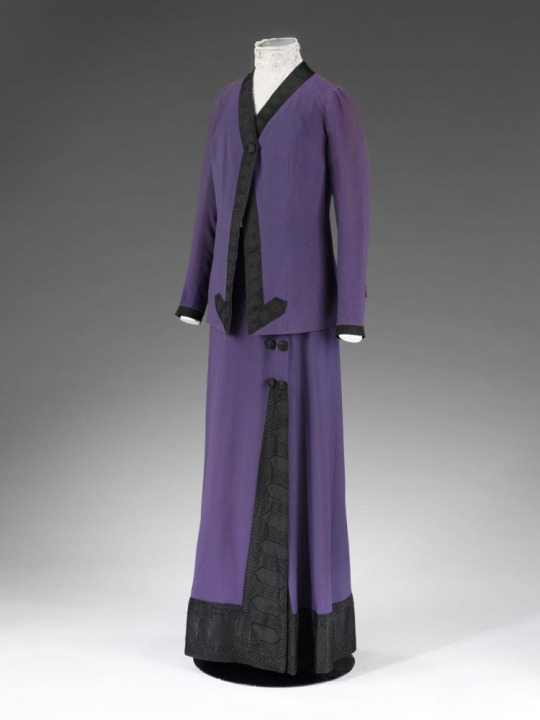
Walking suit, c. 1912, V&A.
And riding habits! From the 17th to the 19th century (and maybe beyond, I don’t know) women’s riding habits had the same style lines as mens suits, but were made with the silhouette of a dress, and it looks very sharp. (Especially the 18th century ones, but I’m biased.) They usually consist of a jacket and matching skirt.
Wow that is a much longer answer than I expected to write. I must make an FAQ page so people can find these more easily.
I hope this was helpful, and I wish you all possible success in future pattern drafting endeavours!
493 notes
·
View notes